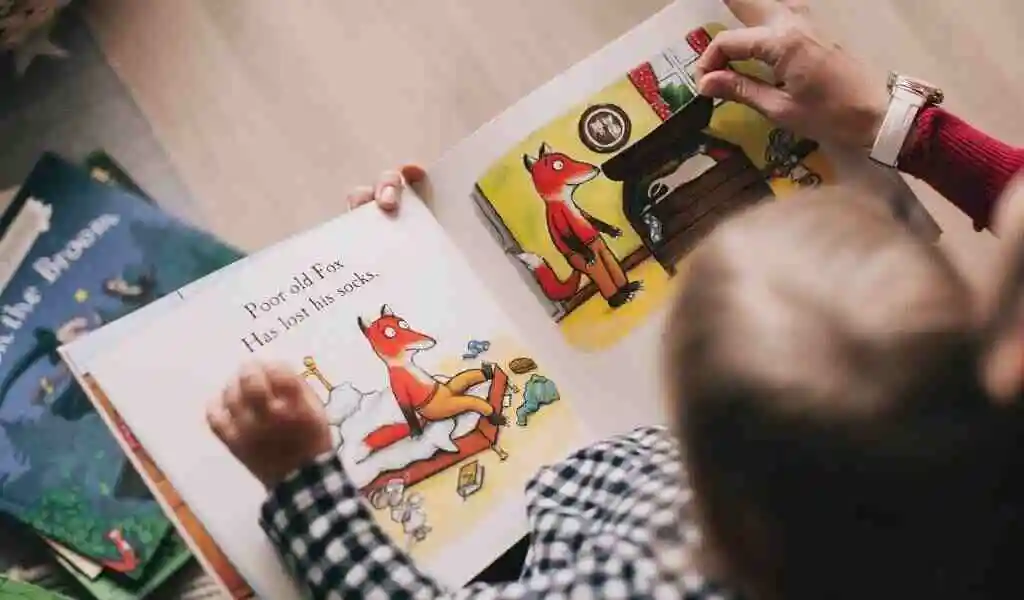Dialogic Reading: Reading skills are an important component of education which not only help the students develop their literacy skills but also help them in developing an understanding of the world around them. Moreover, good reading skills help students with a range of academic and non-academic subjects.
Most educators and parents realize the significance of reading aloud to the young children. Children learn a lot about the world through stories. Good interactive stories capture the attention of the young ones like nothing else. In fact, a great way of getting the kids interested in your stories and developing their reading skills in the process, is through the art of dialogic reading.
It is a form of storytelling where the educators or parents are narrating a story to the kids and conversing with them simultaneously. The kids take up an active role in the narration by taking part in the conversation.
Today, the field of education is evolving at a rapid pace. Educational institutions have by and large adopted newer technological tools and school management software to streamline their teaching and management functions.
Novel teaching and management tools such as eLearning portals, smart classes, institute ERP and likewise have made teaching and learning simpler and more effective than ever before. Dialogic reading is another innovative technique of helping the students become better learners.
In dialogic reading, educators help the kids become the storyteller and they in turn become the listener. This reading technique is superior to other techniques as it actively engages the kids in reading and learning. The most common sequence of actions to engage the kids in dialogic reading is called the PEER sequence. To get the students involved in dialogic reading an adult:
- Prompts the students to say what they think about the book or the story,
- Evaluates the students’ responses,
- Expands the students’ responses by including more ideas, information and rephrasing their response and
- Repeats the response to ensure that the students have understood and learned the added ideas and information.
For instance, imagine an educator and the students are looking at a page of the book that has a picture of a food truck on it. The educator points to the truck and says, “What is this?” (prompt).
The students say truck, and the educator responds with “That’s correct (evaluation); it’s a food truck (expansion); can you all repeat after me food truck?” (repetition). PEER sequence is a great way of making sure that the kids remember what they learn.
The most important part in mastering the PEER sequence is learning how to begin the sequence by prompting the students. This is where the educators can make use of the CROWD. It is an acronym for the ways in which educators can prompt their students. It stands for:
-
Completion-
Here the educators leave a blank at the end of a sentence and ask the students to fill it up. It can be used to get the students to complete a rhyme or in case of repetitive phrases.
-
Recall-
These prompts, as the name suggests, are used to get the kids to remember what they read in the previous class or book. Recall prompts are a great way of getting the kids to commit their learning to long term memory.
-
Open-Ended-
Another great way of prompting the students is by asking open ended questions of them. These prompts work best with illustrations and are primarily focused on the pictures in the books. Educators could ask the students open-ended questions related to what they think is happening in the picture.
-
Wh- prompt-
Asking students questions beginning with the word where, what, when and why is a great way of prompting them during a session of dialogic reading. Just like open-ended prompts, wh-prompts are also suitable for illustrations and pictures.
-
Distancing-
These prompts help the students relate their reading with the outside world. Educators can prompt the students in many ways so that the students are compelled to relate the pictures or the words in the book to their experiences outside the classroom.
Developing sound reading skills in children is a task of utmost importance for the educators and parents. By employing the technique of dialogic reading, the educators can ensure that their students get better at reading and have fun while doing so.
People Also Read:
Why an Aluminum UTE Canopy is a Perfect Choice for an Adventure in 2022?
Everything You Should to Know About Art Auctions in 2022
5 Career Options After School in 2022
Enhance Your Communication Skills With Talkliv
⚠ Article Disclaimer
The above article is sponsored content any opinions expressed in this article are those of the author and not necessarily reflect the views of CTN News






